Learn Lie Algebras: A Walkthrough – The Basics
Click for complete series
Part I: Basics
Table of Contents
Introduction.
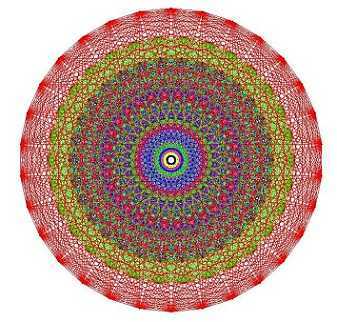 This article is meant to provide a quick reference guide to Lie algebras: the terminology, important theorems, and a brief overview of the subject. Physicists usually call the elements of Lie algebras generators, as for them they are merely differentials of trajectories, tangent vector fields generated by some operators. Thus the distinction between Lie groups and Lie algebras sometimes gets lost. It is the distinction between manifolds and their tangent spaces. If terms as commutator, adjoint, or representation, in general, are used, which apply to both, it is often unclear which of them is meant. The underlying connection is Noether’s theorem, which establishes a correspondence between physical invariants and symmetric groups, Lie groups. The approximation of curved objects – the Lie group elements – by first-order approximations – the Lie algebra elements – is a standard procedure in physics, which might partially explain the neglect. However, the following lays the emphasis on the algebra part from a terminological point of view. The corresponding concept for groups will be named whenever there is an appropriate one. I cannot write another textbook about Lie algebras here, and there is no need to, as there are already many excellent ones! Instead, we will focus on the definitions and theorems, driven by the importance Lie algebras have to physics.
This article is meant to provide a quick reference guide to Lie algebras: the terminology, important theorems, and a brief overview of the subject. Physicists usually call the elements of Lie algebras generators, as for them they are merely differentials of trajectories, tangent vector fields generated by some operators. Thus the distinction between Lie groups and Lie algebras sometimes gets lost. It is the distinction between manifolds and their tangent spaces. If terms as commutator, adjoint, or representation, in general, are used, which apply to both, it is often unclear which of them is meant. The underlying connection is Noether’s theorem, which establishes a correspondence between physical invariants and symmetric groups, Lie groups. The approximation of curved objects – the Lie group elements – by first-order approximations – the Lie algebra elements – is a standard procedure in physics, which might partially explain the neglect. However, the following lays the emphasis on the algebra part from a terminological point of view. The corresponding concept for groups will be named whenever there is an appropriate one. I cannot write another textbook about Lie algebras here, and there is no need to, as there are already many excellent ones! Instead, we will focus on the definitions and theorems, driven by the importance Lie algebras have to physics.
Lie algebras are algebras, are vector spaces. They have an internal multiplication, the commutators, as well as a scalar multiplication by elements of the underlying field – and right in the middle of some common misconceptions we are.
Definition: A Lie algebra ##\mathfrak{g}## is a vector space over a field ##\mathbb{F}## with a ##\mathbb{F}-##bilinear multiplication
\begin{align*}
[.,.]\, : \,\mathfrak{g} &\times \mathfrak{g} \longrightarrow \mathfrak{g}\\
[X&,X]=0\\
[X&,[Y,Z]]+[Y,[Z,X]]+[Z,[X,Y]]=0
\end{align*}
The second equation is called Jacobi-identity. It’s practically nothing else as the product or Leibniz rule of differentiation for the Lie product:
\begin{align*}
\vartheta_X([Y,Z]) &= [\vartheta_X(Y),Z]+[Y,\vartheta_X(Z)]\\
D_X(Y\cdot Z)&=D_X(Y)\cdot Z + Y\cdot D_X(Z)
\end{align*}With the first equation we already have the first difficulty:
$$
[X,X]=0 \Longrightarrow [X,Y]+[Y,X]= 0 \Longrightarrow 2\cdot[X,X] =0 \not\Longrightarrow [X,X]=0
$$
The last implication is not valid, if ##\operatorname{char} \mathbb{F}=2##, which is why we have to use the stronger condition for anti-commutativity in the definition, and why many chapters in Lie algebra books require fields of characteristic ##0## or at least not two, such that the term anti-commutativity for $$[X,X]=0 \Longleftrightarrow [X,Y]=-[Y,X]$$ actually makes sense. The next big restriction for the field is its algebraic closure. Although the theory of Lie algebras doesn’t require an algebraically closed scalar field – and many real Lie algebras are important – it is more than convenient as soon as a Lie algebra is a matrix algebra, i.e. a vector space of linear transformations, or when dealing with representations, roots or weights, because all these involve eigenvalues. The existence of all eigenvalues in general, however, requires an algebraically closed field, simply to get all roots of characteristic polynomials.
For this reason and unless stated otherwise, we assume as scalar field the complex numbers. We also only consider finite-dimensional Lie algebras.
The product ##[X,Y]## is called commutator of ##X## and ##Y##, and at prior has nothing to do with commutation and commuting ##X,Y##. It is simply the Lie multiplication. So why is it called commutator then? This has a couple of reasons
- There are historical reasons. The theory of Lie groups and algebras have been developed at the end of the 19th century, beginning of the 20th. Emmy Noether could and did already use the works of Lie and Engel. E.g. the thesis of Engel (1883) was titled: ‘On The Theory of Touching Transformations’. Nobody at this time had fields of prime characteristic in mind, and the examples they thought of have all been linear Lie algebras. Those are subalgebras of the general linear Lie algebra ##\mathfrak{gl}(V)## of all linear transformations on a real or complex vector space ##V##.
- If we have a linear Lie algebra, also called a matrix algebra, then the commutator is indeed defined as ##\operatorname{ad}(X)(Y)=[X,Y]=XY-YX\,,## i.e. by using the given associative product, here of matrices.
- The commutator in groups is given by ##[g,h]=g^{-1}h^{-1}gh## and commuting group elements are those with ##[g,h]=1## which means ##gh=hg\,.## Thus it is somehow natural to call transformations which obey ##[X,Y]=0## that is ##XY=YX## also commuting. In a way, the commutator measures the distance of a product to commutativity.
- The theorem of Ado says, that for every finite-dimensional, real or complex Lie algebra ##\mathfrak{g}## there is a natural number ##n \in \mathbb{N}## and a Lie subgroup ##G \subseteq GL(n,\mathbb{F})## such that ##\mathfrak{g}## is isomorphic to the Lie algebra of ##G\,.## This means, that the linear Lie algebras are the only relevant case for finite-dimensional, real, or complex Lie algebras.
This essay attempts to provide an overview of Lie algebras and how their classification problem is solved. It certainly cannot substitute a textbook on Lie algebras. We will make some general assumptions for the sake of simplicity and because we want to address the mathematical background of what is used, e.g. in quantum field theory:
- A Lie algebra ##\mathfrak{g}## in our context is finite dimensional and as a vector space complex, or real if explicitly stated. So the scalar field ##\mathbb{F}\in \{\,\mathbb{R},\mathbb{C}\,\}\,.##
- Although not necessary, we can always have the example ##[X,Y] = XY-YX## as commutator in mind, i.e. assume the presence of a second, associative multiplication on the same vector space of linear transformations. However, it is not automatically another, second algebra structure on the vector space, because we do not require that this associative multiplication is closed, i.e. ends up within ##\mathfrak{g}##.
E.g. the matrices ##\mathfrak{sl}(n)## with vanishing trace form a Lie algebra, although their associative product isn’t closed:
$$
\begin{pmatrix}-1&1\\0&1\end{pmatrix}\cdot \begin{pmatrix} 0&0\\1&0\end{pmatrix} = \begin{pmatrix}1&0\\1&0\end{pmatrix}
\; , \;\left[\begin{pmatrix}-1&1\\0&1\end{pmatrix},\begin{pmatrix} 0&0\\1&0\end{pmatrix} \right]=\begin{pmatrix} 1&0\\2&-1\\ \end{pmatrix}$$ - A commutator in groups is always defined as ##[x,y]=x^{-1}y^{-1}xy## and we will have ##[X,Y]=XY-YX## in the Lie algebra. So ##[X,Y]=0 \Longleftrightarrow XY=YX##, and for a set ##S \subseteq \mathfrak{g}## we write, e.g.
$$
[X,S]=\{\,[X,Y]\,:\,Y\in S \,\}\text{ or } [\mathfrak{g},\mathfrak{g}]=\{\,[X,Y]\, : \,X,Y \in \mathfrak{g}\,\}
$$
We will need some basic vocabulary to outline the theory. I put these basic definitions in a table, such that they can always be looked up if necessary.
Vocabulary.
\begin{array}{l|l|l|l}&\text{Lie algebra } \mathfrak{g} & & \text{(Lie) Group }G \\[6pt] \hline &&&\\ \text{Abelian }& [X,Y]=0 &\text{Abelian }& [g,h]=g^{-1}h^{-1}gh = 1\\[6pt] \hline &&&\\ \text{ideal } \mathfrak{I}& [\mathfrak{g},\mathfrak{I} ] \subseteq \mathfrak{I}&\text{normal }& [G,N]\subseteq N \\&&\text{subgroup }N& g^{-1}Ng\subseteq N \; , \;g^{-1}ng \in N\\[6pt] \hline &&&\\ \text{center }&\mathfrak{Z(g)}=\{X\, : \,[X,\mathfrak{g}]=0\}& \text{center }& Z(G)=\{g\, : \,[g,G]=1\}\\[6pt] \hline&&& \\ \text{centralizer }&C_\mathfrak{g}(S)=\{X\, : \,[X,S]=0\}&\text{centralizer }&C_G(S)=\{g\, : \,[g,S]=1\}\\ \text{of }S\subseteq \mathfrak{g}&&\text{of }S \subseteq G& \\[6pt]
\hline&&&\\ \text{normalizer }&N_\mathfrak{g}(S)=\{X\, : \,[X,S]\subseteq S\}&\text{normalizer }&N_G(S)=\{g\, : \,[g,S]\subseteq S\}\\ \text{of }S\subseteq \mathfrak{g}&&\text{of }S \subseteq G& \\[6pt] \hline&&& \\ \text{adjoint }&\operatorname{ad}\, : \,\mathfrak{g}\longrightarrow \mathfrak{gl(g)}& \text{adjoint }& \operatorname{Ad}\, : \,G \longrightarrow GL(\mathfrak{g})\\
\text{repres. } & \operatorname{ad}(X)(Y)=[X,Y] & \text{repres. }& \operatorname{Ad}(g)(Y)=gYg^{-1} \\[6pt]
\hline&&&\\ \text{homo- }&\varphi\, : \,\mathfrak{g}\longrightarrow \mathfrak{g}&\text{homo- }&\varphi\, : \,G \longrightarrow G\\ \text{morphism }&\varphi([X,Y])=[\varphi(X),\varphi(Y)]&\text{morphism }&\varphi(g\cdot h)=\varphi(g)\cdot \varphi(h)\\[6pt]
\hline&&&\\
\text{derivation }&\vartheta([X,Y])=&\text{w/o}&\text{(differential of}\\
&[\vartheta(X),Y]+[X,\vartheta(Y)]&&\text{an automorphism) }\\[6pt]
\hline&&&\\
\text{inner }&\vartheta = \operatorname{ad}(Z)\, : \,X \mapsto [Z,X]&\text{w/o}&\text{(differential of }\\
\text{derivation }&\text{for a }Z\in \mathfrak{g}&&\text{a conjugation) }\\[6pt]
\hline&&&\\
\text{derived }&\mathfrak{g}^0=\mathfrak{g}^{(0)}=\mathfrak{g}&\text{commutator } &G^0=G^{(0)}=G\\
\text{algebra }&\mathfrak{g}^1=\mathfrak{g}^{(1)}=[\mathfrak{g},\mathfrak{g}]&\text{group }&G^1=G^{(1)}=[G,G]\\[6pt]
\hline&&&\\
\text{descending }&\mathfrak{g}^n=[\mathfrak{g},\mathfrak{g}^{n-1}]&\text{lower }&G^n=[G,G^{n-1}]\\
\text{central series }&&\text{central series }&\\[6pt]
\hline&&&\\
\text{derived }&\mathfrak{g}^{(n)}=[\mathfrak{g}^{(n-1)},\mathfrak{g}^{(n-1)}]&\text{derived }&G^{(n)}=[G^{(n-1)},G^{(n-1)}]\\
\text{series }&&\text{series }&\\[6pt]
\hline&&&\\
\mathfrak{g} \text{ is nilpotent }&\mathfrak{g}^n=0\text{ for some }n&G \text{ is nilpotent }&G^n=1 \text{ for some }n\\[6pt]
\hline&&&\\
\mathfrak{g} \text{ is solvable }&\mathfrak{g}^{(n)}=0 \text{ for some }n&G \text{ is solvable }&G^{(n)}=1 \text{ for some }n\\[6pt]
\hline&&&\\
\text{nilradical }\mathfrak{N(g)}&\text{maximal nilpotent ideal }&\text{nilradical }N(G)&\text{maximal nilpotent }\\
&&&\text{normal subgroup}\\[6pt]
\hline&&&\\
\text{radical }\mathfrak{R(g)}&\text{maximal solvable ideal }&\text{radical }R(G)&\text{maximal solvable }\\
&&&\text{normal subgroup }\\[6pt]
\hline&&&\\
\mathfrak{g}\text{ is simple}&\mathfrak{g}\text{ has no proper ideals}&G \text{ is simple}&G \text{ has no proper}\\
&&&\text{normal subgroups}\\[6pt]
\hline&&&\\
\mathfrak{g}\text{ is semisimple}&\mathfrak{R(g)}=0&G\text{ is semisimple }& ^*)\\[6pt]
\hline&&&\\
\mathfrak{g} \text{ is reductive}&\mathfrak{R(g)}=\mathfrak{Z(g)}&G\text{ is reductive}&^{**})\\[6pt]
\hline&&&\\
\mathfrak{h} \leq \mathfrak{g}\text{ is toral }&\operatorname{ad}H\,(H\in \mathfrak{h}) \text{ are} &H \leq G\text{ torus}&\text{linear algebraic group} \\
&\text{simultaneously }&&\text{consisting of diagonal} \\
&\text{diagonalizable}&&\text{matrices}\\[6pt]
\hline \end{array}
##^*)\,##A connected linear algebraic group ##G## over an algebraically closed field is called semisimple if every smooth connected solvable normal subgroup of ##G## is trivial.
##^{**})\,##A connected linear algebraic group ##G## over an algebraically closed field is called reductive if every smooth connected unipotent (##\sim## upper triangular matrices with ##1’##s on the diagonal), normal subgroup of ##G## is trivial.
\begin{array}{l|l}
\text{Cartan subalgebra (CSA) }\mathfrak{h} \leq \mathfrak{g}&\mathfrak{h}=N_\mathfrak{g}(\mathfrak{h}) \text{ and }\mathfrak{h}\text{ is nilpotent}\\[6pt]
\hline &\\
\text{Borel subalgebra }\mathfrak{B}\leq \mathfrak{g}&\text{maximal solvable subalgebra}\\[6pt]
\hline &\\
\text{Engel subalgebra }\mathfrak{E}_\mathfrak{g}(X)& \{\,Y\in \mathfrak{g}\,:\,(\operatorname{ad}(X))^n(Y)=0 \text{ for some }n\in \mathbb{N}\,\}\\[6pt]
\hline &\\
\text{structure constants }a_{ij}^k & [X_i,X_j]=\sum_{k=1}^na_{ij}^kX_k\,,\,(X_k)\text{ basis}\\[6pt]
\hline &\\
\text{symmetric bilinear form }\beta & \beta\, : \,\mathfrak{g}\times \mathfrak{g}\longrightarrow \mathbb{F}\in \{\,\mathbb{R},\mathbb{C}\,\} \\[6pt]
&\beta(X,Y)=\beta(Y,X)\\ &\beta(a X+bY,Z)=a\beta(X,Z)+b\beta(Y,Z)\\[6pt]
\hline &\\
\text{radical of } \beta &\{\,X\in \mathfrak{g}\,:\,\beta(X,Y)=0 \text{ for all }Y\in \mathfrak{g}\,\} \\[6pt]
\hline &\\
\text{Killing-form }K& K(X,Y)=\operatorname{tr}(\operatorname{ad}(X)\circ \operatorname{ad}(Y))\\[6pt]
\hline
\end{array}
Classical (simple) Lie Algebras.
The following subalgebras of ##\mathfrak{gl}(V)## of linear transformations on a finite, ##n-##dimensional vector space ##V## are called the classical Lie algebras ##\mathfrak{g}##. They are all simple, and plus five exceptional Lie algebras (##E_6,E_7,E_8,F_4,G_2##) all simple ones there are. Let ##\mathfrak{h}\subseteq \mathfrak{g}## be a Cartan subalgebra of dimension ##l##.
Let us further define ##e_{ij}## as the matrix whose entry in the i-th row and j-th column is ##1## and ##0## elsewhere.
Special Linear Lie Algebra.
Type: ##A_l\; , \;\mathfrak{sl}(n,\mathbb{F})\; , \;\dim \mathfrak{sl}(n,\mathbb{F})=n^2-1=l^2+2l\; , \;\dim V=n=l+1##
##\mathfrak{sl}(n,\mathbb{F})=\{\,X\in \mathbb{M}(n,\mathbb{F})\,:\,\operatorname{tr}(X)=0\,\}## are all linear transformations on ##V##, i.e. ##n\times n## matrices with vanishing trace. It is thus of dimension ##n^2-1=l^2+2l\,.##
Basis: ##e_{i\,j}\,(i\neq j)\; , \;h_i=e_{i\,i}-e_{i+1\,,\,i+1}\,(1\leq i \leq l)##
The ‘special unitary’ Lie algebras ##\mathfrak{su}(n,\mathbb{C})## of skew-Hermtian complex matrices with trace ##0## are of this type. There is a complex basis transformation of the real vector spaces
$$\mathfrak{su}(n,\mathbb{C}) \cong_\mathbb{C} \mathfrak{sl}(n,\mathbb{R})$$
This means they are the same real Lie algebra. The basis transformation, however, needs to be complex, as the skew-Hermitian matrices contain complex numbers. The misleading name is inherited from the group.
\begin{array}{l|l|l|l}
\text{Group}&&\text{Lie Algebra}&\\
\hline &&&\\
\text{special unitary} &SU(n,\mathbb{C})&\text{ ‘special unitary’} &\mathfrak{su}(n,\mathbb{C})\\
\hline &&&\\
\text{special} & \det U= 1 &\text{special }&\operatorname{tr}X = 0\\
\hline &&&\\
\text{unitary} & U\cdot U^\dagger = 1&\text{skew-Hermitian}&X+X^\dagger = 0\\
\hline
\end{array}
We often find ##\mathfrak{sl}(n,\mathbb{R})## as examples in textbooks about Lie algebras, e.g. to demonstrate their representations. These examples are automatically examples for ##\mathfrak{su}(n,\mathbb{C})##, too, modulo some minor adjustments due to the different bases. E.g. the Pauli matrices, which are not skew-Hermitian and thus not elements of ##\mathfrak{su}(2,\mathbb{C})## are all elements of ##\mathfrak{sl}(2,\mathbb{C})##. However, their multiples with ##i## are skew-Hermitian.
$$
\sigma_1 = e_{12}+e_{21}\; , \;\sigma_2=-ie_{12}+ie_{21} \; , \;\sigma_3=e_{11}-e_{22}
$$
Orthogonal Lie Algebra On Odd-Dimensional Spaces.
Type: ##B_l\; , \;\mathfrak{o}(n,\mathbb{F})\; , \;\dim \mathfrak{o}(n,\mathbb{F})=\dfrac{n^2-n}{2}=2l^2+l\; , \;\dim V=n=2l+1 ##
Let ##\beta## be the nondegenerate, symmetric bilinear form on ##V## whose matrix is ##\begin{bmatrix}1&0&0\\0&0&I_l\\0&I_l&0\end{bmatrix}\,.## Then the orthogonal algebra is
$$
\mathfrak{o}(2l+1,\mathbb{F})=\mathfrak{o}(V)=\{\,X \in \operatorname{Hom}(V)\,:\,\beta(X(v),w)+\beta(v,X(w))=0\,\}
$$
Basis: (according to the choice of ##\beta##)
\begin{align*}
e_{i\,i}-e_{l+i\, , \,l+i}\quad&(2\leq i \leq l+1)\\
e_{1\, ,\,l+i+1 \,}-e_{i+1\, ,\, 1}\quad&(1\leq i \leq l)\\
e_{1\, ,\,i+1 \,}-e_{l+i+1\, , \,1}\quad&(1\leq i \leq l)\\
e_{i+1\, ,\,j+1 \,}-e_{l+j+1\, , \,l+i+1}\quad&(1\leq i \neq j \leq l)\\
e_{i+1\, ,\,l+j+1 \,}-e_{j+1\, ,\,l+i+ 1}\quad&(1\leq i < j \leq l)\\
e_{l+i+1\, ,\,j+1 \,}-e_{l+j+1\, ,\,i+ 1}\quad&(1\leq j < i \leq l)
\end{align*}
Symplectic Lie Algebra.
Type: ##C_l\; , \;\mathfrak{sp}(n,\mathbb{F})\; , \;\dim \mathfrak{sp}(n,\mathbb{F})=\dfrac{n^2+n}{2}=2l^2+l\; , \;\dim V=n=2l ##
Let ##\beta## be the nondegenerate, skew-symmetric bilinear form on ##V## whose matrix is ##\begin{bmatrix}0&I_l\\-I_l&0\end{bmatrix}\,.## Then the symplectic algebra is
$$
\mathfrak{sp}(2l,\mathbb{F})=\mathfrak{sp}(V)=\{\,X \in \operatorname{Hom}(V)\,:\,\beta(X(v),w)+\beta(v,X(w))=0\,\}
$$
Basis: (according to the choice of ##\beta##)
\begin{align*}
e_{i\,i}-e_{l+i\, , \,l+i}\quad&(1\leq i \leq l)\\
e_{i\, ,\,j}-e_{l+j\, ,\,l+i}\quad&(1\leq i \neq j \leq l)\\
e_{i\, ,\,l+i}\quad&(1\leq i \leq l)\\
e_{i\, ,\,l+j}+e_{j\, , \,l+i}\quad&(1\leq i < j \leq l)\\
e_{l+i\, ,\,i}\quad&(1\leq i \leq l)\\
e_{l+i\, ,\,j}+e_{l+j\, , \,i}\quad&(1\leq i < j \leq l)\\
\end{align*}
Orthogonal Lie Algebra On Even-Dimensional Spaces.
Type: ##D_l\; , \;\mathfrak{o}(n,\mathbb{F})\; , \;\dim \mathfrak{o}(n,\mathbb{F})=\dfrac{n^2-n}{2}=2l^2-l\; , \;\dim V=n=2l ##
Let ##\beta## be the nondegenerate, symmetric bilinear form on ##V## whose matrix is ##\begin{bmatrix}0&I_l\\I_l&0\end{bmatrix}\,.## Then the orthogonal algebra is
$$
\mathfrak{o}(2l,\mathbb{F})=\mathfrak{o}(V)=\{\,X \in \operatorname{Hom}(V)\,:\,\beta(X(v),w)+\beta(v,X(w))=0\,\}
$$
Basis: (according to the choice of ##\beta##)
\begin{align*}
e_{i\,i}-e_{l+i\, , \,l+i}\quad&(1\leq i \leq l)\\
e_{i\, ,\,j \,}-e_{l+j\, , \,l+i}\quad&(1\leq i \neq j \leq l)\\
e_{i\, ,\,l+j \,}-e_{j\, ,\,l+i}\quad&(1\leq i < j \leq l)\\
e_{l+i\, ,\,j \,}-e_{l+j\, ,\,i}\quad&(1\leq j < i \leq l)
\end{align*}
Exceptional Lie Algebras.
The actual construction of the exceptional Lie algebras uses concepts like Jordan algebras, octonions and their derivation algebras which will lead too far, so let us summarize them as a list:
\begin{array}{l|c|c|c|c|c}
\text{Lie algebra }\mathfrak{g}&E_6&E_7&E_8&F_4&G_2\\
\hline &&&&&\\
\dim \text{ CSA }&6&7&8&4&2\\
\hline &&&&&\\
\dim \mathfrak{g}&78&133&248&52&14\\
\hline
\end{array}
Many of these simple Lie algebras contain other simple Lie algebras as subalgebras, e.g. $$A_1 \subseteq A_2 \subseteq G_2 \subseteq D_4 \subseteq F_4 \subseteq E_6 \subseteq E_7 \subseteq E_8$$ or see the info graphic on Wikipedia for ##E_8\,.##
Whenever we speak of semisimple Lie algebras, then we mean a direct sum of these simple ones (therefore the name ‘semisimple’): orthogonal, unitary, symplectic, exceptional; in physics often just one of the simple classical ones.
Theorem: A Lie algebra ##\mathfrak{g}## is semisimple if and only if
\begin{array}{lr}
\mathfrak{g} = \bigoplus_{i=1}^m \mathfrak{g}_i & (1)
\end{array}
is a direct sum of simple ideals ##\mathfrak{g}_i \trianglelefteq
\mathfrak{g}\,.##
Sources
Sources
[1] J.E. Humphreys: Introduction to Lie Algebras and Representation Theory
https://www.amazon.com/Introduction-Algebras-Representation-Graduate-Mathematics/dp/0387900535/
[2] H. Samelson: Notes on Lie Algebras, Cornell 1989
[3] J.E. Humphreys: Linear Algebraic Groups
https://www.amazon.com/Linear-Algebraic-Groups-Graduate-Mathematics/dp/0387901086/
[4] W. Greub: Linear Algebra
https://www.amazon.com/Linear-Algebra-Werner-H-Greub/dp/8184896336/
[5] P.J. Olver: Applications of Lie Groups to Differential Equations
https://www.amazon.com/Applications-Differential-Equations-Graduate-Mathematics/dp/0387950001
[6] V.S. Varadarajan: Lie Groups, Lie Algebras, and Their Representations
https://www.amazon.com/Groups-Algebras-Representation-Graduate-Mathematics/dp/0387909699/
[7] D. Vogan: Classical Groups
http://www-math.mit.edu/~dav/classicalgroups.pdf
[8] H.F. de Groote: Lectures on the Complexity of Bilinear Problems
https://www.amazon.com/Lectures-Complexity-Bilinear-Problems-Jan-1987/dp/B010BDZWVC
[9] C. Blair: Representations of $\mathfrak{su}(2)$
http://www.maths.tcd.ie/~cblair/notes/su2.pdf
[10] Jean Dieudonné: Geschichte der Mathematik 1700-1900, Vieweg Verlag 1985
[11] Representations and Why Precision is Important
https://www.physicsforums.com/insights/representations-precision-important/
[12] A Journey to The Manifold SU(2): Differentiation, Spheres, and Fiber Bundles
https://www.physicsforums.com/insights/journey-manifold-su2mathbbc-part/
[13] The Pantheon of Derivatives
https://www.physicsforums.com/insights/the-pantheon-of-derivatives-i/
[14] What is a Tensor?
https://www.physicsforums.com/insights/what-is-a-tensor/
[15] The nLab
https://ncatlab.org/nlab/show/HomePage
[16] Wikipedia (English)
https://en.wikipedia.org/wiki/Main_Page
[17] Image source: http://math.ucr.edu/home/baez/kostant/

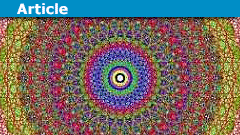
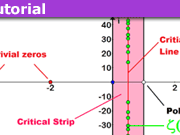
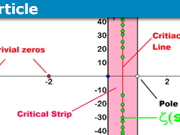
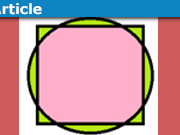

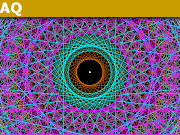
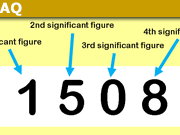

There is a difference how mathematicians and physicists use the terminology. For a mathematician a Lie algebra is what's written in the insight article i.e. a set with operations that… In physics books one can often find phrases as " E, F, and H satisfy the ##mathfrak{sl}_2## Lie algebra".
Brings back memories …. so, some tangential personal reminisces (that are not in the tangent space).
I took a grad course that used Humphreys, and that was given by two of the authors of
https://arxiv.org/abs/1411.3788 ,
Dan Britten and Frank Lemire.
They also taught me a number of other algebra courses at the undergraduate and graduate levels, and Dan Britten was an external examiner on my Ph.D committee. Frank Lemire is referenced in Humphreys. They are largely responsible for whatever ability I have in following arguments in abstract algebra (and not responsible for my shortcomings in algebra).
These guys know some of the "good" stories from my wild university days. My wife only knows that the stories exist. After 20 years without any contact, a few years ago they tracked me down and emailed me, but I delayed, and then forgot about, responding.
My article was mainly meant for physicists who have to deal with Lie algebras but don't want to attend a lecture, so I thought I'd write a summary.Yes, that's why I am reading it. I am not much find of rigorous maths as of now.
What a timing! I was going to study lie algebras, when you posted this insight. That will be truly helpful.There will be two other parts coming soon (I hope). But I just found by chance an old manuscript on the Cornell server which has incidentally the same structure as my insights will have. It's a pdf of 172 pages and for free: https://pi.math.cornell.edu/~hatcher/Other/Samelson-LieAlg.pdf
My article was mainly meant for physicists who have to deal with Lie algebras but don't want to attend a lecture, so I thought I'd write a summary.
What a timing! I was going to study lie algebras, when you posted this insight. That will be truly helpful.
Well, it was only the introduction. Engel called it "Berührungstransformation" (touching transformation) which I think is close to "generator". I only observed that the term is frequently used when actually a kind of tangent is meant. I admit that I never figured it out what exactly they mean, especially as it is referenced to a) the group and b) as in your example matrices which mathematically do not belong to the tangent space. Furthermore the term doesn't really fit mathematically. Humphreys defines generators as elements which generate a free Lie algebra, similar as it is used in group theory. This makes sense, the other usage is – as I assume – a historical leftover.
I would not agree that physicists typically call the elements of a Lie algebra "generators". I have never encountered this although I am sure there are those who might do that. Typical physics jargon is that "generator" refers to a particular set of elements of the Lie algebra that forms a basis. For example, a physicist would say that the generators of SU(2) are the Pauli matrices (not the vector space spanned by them).